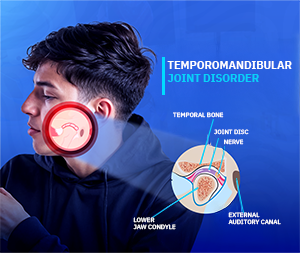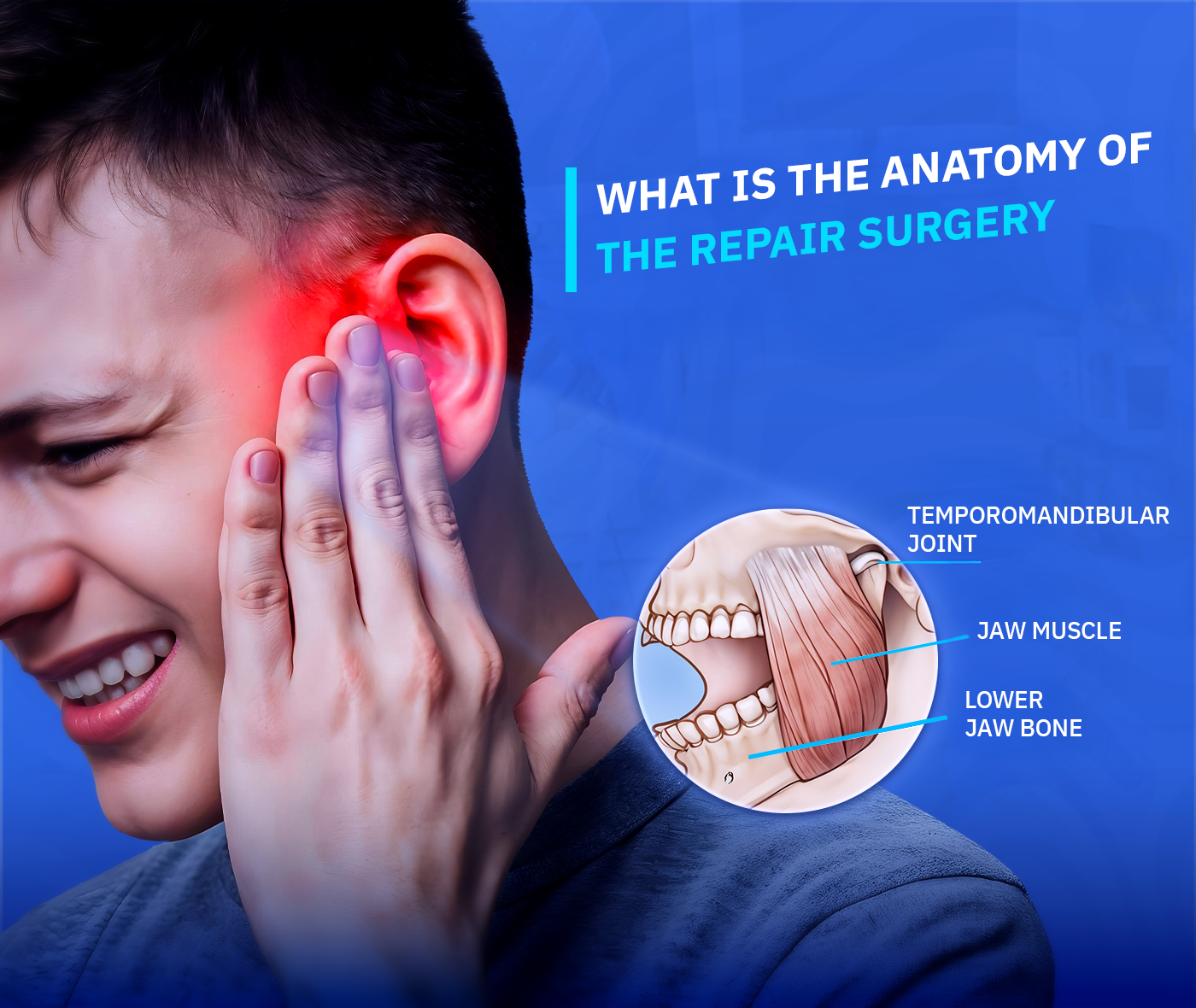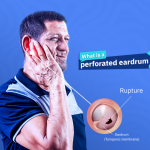Temporomandibular
Like all joints in the body, the temporomandibular joints (TMJs)—located on either side of the jaw in front of the ears—are susceptible to inflammation and a variety of medical issues. TMD, or Temporomandibular Joint Disorders, affect these sliding joints that connect the lower jawbone to the skull and play a vital role in chewing and speaking.
Globally, it is estimated that between 5% and 12% of adults have experienced some form of TMD, with women between the ages of 20 and 40 being the most affected. Despite its prevalence and the severe pain it can cause—often extending to the neck, behind the ears, and the head—awareness about its symptoms and treatments remains limited. This article discusses everything you need to know about TMD, including its causes, symptoms, treatment options, and connection to ear problems.
- Causes of Temporomandibular
- Symptoms of Temporomandibular
- Diagnosis of Temporomandibular
- Temporomandibular Treatment Options
- Non-Medication Treatments
- Is TMJ Surgery Risky?
- Temporomandibular and Hearing Problems

Causes of Temporomandibular
Have you ever experienced jaw stiffness or a clicking sound when moving your jaw? This may be due to TMD. Though the exact causes are not fully understood, several contributing factors include:
- Direct trauma to the jaw or joint
- Joint inflammation or degeneration
- Teeth grinding (bruxism)
- Congenital jaw structure abnormalities
- Chronic stress leading to jaw clenching
- Inflammatory diseases such as rheumatoid arthritis or osteoarthritis
- Excessive strain on chewing muscles and joints
Symptoms of Temporomandibular
TMD can present with various symptoms, but the most common is persistent facial pain, either on one or both sides. Other symptoms may include:
- Severe facial pain, especially around the TMJ
- Jaw muscle pain during chewing or clenching
- Difficulty opening the mouth wide
- Clicking, popping, or grinding sounds in the jaw
- Recurrent headaches, particularly in the forehead area
- Facial swelling
- Neck stiffness and pain, possibly radiating to the arms
- Earaches or ear fullness
- Spasms in the jaw, neck, shoulders, or around the inner ear during chewing or talking
- Tightness in the cheeks upon waking up
Diagnosis of Temporomandibular
Diagnosing Temporomandibular can be challenging as there is no single standardized test. Typically, diagnosis involves a consultation with a dentist or an ENT specialist.
Examinations include:
- Physical palpation of the TMJ for swelling and pain
- Imaging studies such as:
- X-rays to view the jaw structure
- CT scans to assess joint bones and tissues
- MRI to evaluate soft tissue and joint disc integrity
- X-rays to view the jaw structure
Temporomandibular Treatment Options
Most Temporomandibular cases can be managed with self-care and don’t require surgical intervention. Home-based remedies include:
- Eating soft foods
- Minimizing jaw movement and avoiding hard or chewy foods
- Reducing stress and avoiding teeth grinding
- Applying warm compresses
- Performing jaw-stretching exercises gradually
If symptoms persist, medical treatment may involve:
- Pain relievers or muscle relaxants
- Anti-inflammatory medications
- Oral splints or mouth guards to relieve muscle tension and prevent grinding
- Physical therapy, including ultrasound, moist heat, and cold therapy
- Behavioral therapy for stress management
- Direct joint injections to relieve inflammation and stiffness
About 80% of patients improve with conservative and medical treatments, often within three weeks. However, complex cases may require surgical intervention.
Non-Medication Treatments
Arthrocentesis:
A minimally invasive procedure involving flushing out inflammatory fluids from the joint, followed by the injection of a healing substance to improve joint mobility.
TMJ Surgery:
- Arthroscopic surgery: Often effective and minimally invasive.
- Open joint surgery: Reserved for severe cases unresponsive to other treatments. It may involve repositioning or replacing the joint, removing tumors, or damaged tissues.
Is TMJ Surgery Risky?
Open joint surgery involves incisions near and behind the ear to access and repair or replace the TMJ. It can significantly improve essential functions like breathing, speaking, swallowing, biting, and chewing. However, it carries higher risks than non-surgical methods and should only be considered after thorough evaluation.
Potential complications include:
- Bleeding
- Infection
- Nerve damage
- Jaw misalignment
- Need for additional surgeries
Postoperative symptoms like ear pain or jaw pressure usually resolve within 2–3 weeks.
Temporomandibular and Hearing Problems
Due to the anatomical proximity of the TMJ to the auditory system, TMJ disorders can negatively impact ear health. Inflammation in the joint may cause ear pain, hearing issues, or tinnitus—a persistent ringing sound. The inner ear, responsible for sound processing, may also be affected, impairing hearing precision. If you experience simultaneous jaw and ear pain, consulting an ENT specialist is essential to rule out auditory damage.
TMD varies in intensity and impact from person to person. However, thanks to medical advancements and diverse treatment options, it is possible to significantly improve quality of life. If you suffer from chronic jaw pain or recurring headaches, early diagnosis and appropriate care are key to relieving symptoms and restoring daily comfort.





